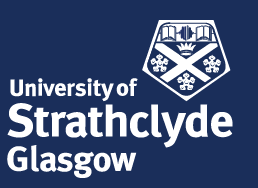 The University of Strathclyde in Glasgow was founded in 1796 as the Andersonian Institute, before receiving its Royal Charter in 1964 as the UK's first technological university. It is comprised of four main faculties, sub-divided into departments which deal with specific academic and research areas. The Department of Mechanical and Aerospace Engineering within the Faculty of Engineering and the Department of Physics within the Faculty of Science are the main departments engaged in space activities. Strength in space research and technology spans a broad range of programmes delivered through the Strathclyde Space Institute which is a multi-disciplinary venture addressing key challenges in space systems engineering, space robotics, satellite applications and access to space. The institute comprises: the Advanced Space Concepts Laboratory; the Centre for Future Air-Space Transport Technology; the Space Mechatronic Systems Technology Laboratory (SMeSTech); and the Centre for Space Science and Applications. Its space-related facilities include a Mission Laboratory, a Concurrent and Collaborative Design Studio, SMeSTech, and SCAPA, a multi-species radiation testing facility that is a potential game-changer for testing radiation detectors, components and subsystems in a realistic space radiation environment.
The University of Strathclyde in Glasgow was founded in 1796 as the Andersonian Institute, before receiving its Royal Charter in 1964 as the UK's first technological university. It is comprised of four main faculties, sub-divided into departments which deal with specific academic and research areas. The Department of Mechanical and Aerospace Engineering within the Faculty of Engineering and the Department of Physics within the Faculty of Science are the main departments engaged in space activities. Strength in space research and technology spans a broad range of programmes delivered through the Strathclyde Space Institute which is a multi-disciplinary venture addressing key challenges in space systems engineering, space robotics, satellite applications and access to space. The institute comprises: the Advanced Space Concepts Laboratory; the Centre for Future Air-Space Transport Technology; the Space Mechatronic Systems Technology Laboratory (SMeSTech); and the Centre for Space Science and Applications. Its space-related facilities include a Mission Laboratory, a Concurrent and Collaborative Design Studio, SMeSTech, and SCAPA, a multi-species radiation testing facility that is a potential game-changer for testing radiation detectors, components and subsystems in a realistic space radiation environment.
Strathclyde regards the four facilities summarised above as important contributors to the UK facilities landscape:
- Its Mission Lab containing the CubeSat flatsat enables the development of proof-of-concept payloads and satellite systems for future CubeSat missions. Additionally, it will provide ad‐hoc and ongoing support for academic institutions, start‐ups and SMEs to develop new payloads for CubeSats. This will mitigate the need for significant up‐front investment that might otherwise be necessary to demonstrate new technology concepts.
- The CDDS will provide a unique multi‐disciplinary environment for designing and optimising space missions and systems and develop new methods and approaches to improve performance, resilience and reliability of space systems and services. It will provide computational tools and expert support to Industry and Academia to demonstrate the feasibility of new missions, technologies and services and to improve the design of future space platforms.
- Mechatronics has been established as key technology in developing many intelligent systems and in particular for consumable products. There is much scope and many opportunities for its applications - in particular in space explorations
- The potential improvement in radiation testing space components, subsystems and detectors in a realistic multi-species space radiation environment using LPAs in the SCAPA facility promises to be a big step forward in the quality of radiation testing in the UK.

